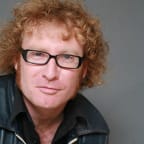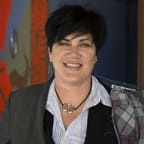Immigrants remain unintegrated into the New Zealand character.
How well the Treaty of Waitangi is understood depends on which part of the New Zealand population you’re talking about, according to Massey University’s Prof Paul Spoonley. The degree to which the immigrant communities feel a sense of connection to or understanding of biculturalism, and the role of the Treaty, is to Spoonley an open question.
When he looks around at immigrant-receiving countries, the thing that strikes him is that “they work very hard to make sure that those arriving are loyal citizens.” By contrast, in New Zealand he feels that we don’t make anything like the same effort.
“When you go to Australia” he says, “there’s a lot of investment in making them an Australian. And we don’t do that. Being a permanent resident gives you all the rights of a citizen. In fact we’re the only country in the world where a non-citizen can vote.”
And this lack of nationalistic fervour comes through in hour half-hearted use of the national flag. Speaking in a panel discussion about the Treaty of Waitangi hosted by the Auckland Museum, Spoonley comments “I don’t know whether the museum flies a flag. But when you go round there aren’t many flags. If we were in Australia we would have the flag behind this panel as a form of exclusive nationalism.”
About the participants

Te Radar
Te Radar is a satirist, documentary maker, writer, stage and screen director, failed gardener, and amateur historian. He is best known for several television series about sustainable living, and more recently for two series looking at countries throughout the Pacific. He is currently working on a TV series called Radar's Chequered Past about New Zealand history. It is based on his acclaimed stage show Eating the Dog.
Kiritapu Allan

Kiritapu is of Ngāti Ranginui, Ngāi Te Rangi and Ngāti Tūwharetoa descent. Kiritapu has been a social entrepreneur and engaged in social justice issues since she was 16. She has founded several not-for-profit organisations that focus on developing leadership potential and has represented the Asia Pacific region at the United Nations Permanent Forum on Indigenous Issues. Kiritapu is an Associate at Kahui Legal, a specialist law firm at the forefront of the Māori economy and advises on legal issues across a range of areas.
Paul Spoonley

Distinguished Professor Paul Spoonley is the Pro Vice-Chancellor of the College of Humanities and Social Sciences at Massey University, New Zealand. He is the author or editor of 27 books on politics, employment and labour markets, ethnic identity and immigration. The award of a recent MBIE grant enables the New Zealand research team to examine the way in which immigation has contributed to superdiversity in global cities. Auckland will become a new site for this research.
Suzanne Tamaki

Suzanne Tamaki (Maniapoto, Tūhoe, Te Arawa) is a fibre artist with the label Native Sista. She creates body adornment, costumes and jewellery inspired by legends and mythical creatures in the Pacific. Wāhine-toa feature prominently in her work, as she uses fashion to agitate discussions about indigenous issues in Aotearoa New Zealand. Suzanne was one of the founding members of the Pacific Sisters fashion collective in the mid 1990s. Her work has been exhibited extensively throughout New Zealand and the Pacific.
Leilani Tamu

Leilani Tamu is a poet, social commentator, Pacific historian and former New Zealand diplomat. In 2013 she was the Fulbright/Creative New Zealand Writer in Residence at the University of Hawai'i in Mānoa. Prior to this, Leilani was a regular contributor to Auckland's Metro magazine where she tackled issues as diverse as racism, unemployment, property investment, cyber bullying, youth suicide and motherhood. Her debut book of poetry The Art of Excavation was published in August 2014.
This programme was recorded in partnership with the Auckland Museum

